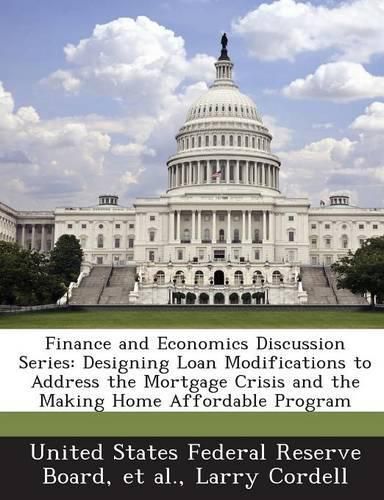Readings Newsletter
Become a Readings Member to make your shopping experience even easier.
Sign in or sign up for free!
You’re not far away from qualifying for FREE standard shipping within Australia
You’ve qualified for FREE standard shipping within Australia
The cart is loading…






Delinquencies on residential mortgages and home foreclosures have risen dramatically in the past couple of years. The mortgage losses triggered a broad-based financial crisis and severe recession, which, in turn, exacerbated the initial financial distress faced by homeowners. Although servicers increased their loss mitigation efforts as defaults began to mount, foreclosures continued to occur in cases where both the borrower and investor would be better off if such an outcome were avoided. The U.S. government has engaged in a number of initiatives to reduce such foreclosures. This paper examines the economic underpinnings of the Administration’s loan modification program, the Home Affordable Modification Program (HAMP). We argue that HAMP should help many borrowers avoid foreclosure, as its key features-a standardized protocol, incentive fees for servicers, and a requirement that the first lien mortgage payment be reduced to 31 percent of gross income-alleviate some of the previous obstacles to successful modifications. That said, HAMP is not well-suited to address payment problems associated with job loss because the required modification in such cases would often be too costly to qualify for the program. In addition, the focus of the program on reducing the payments associated with the mortgage rather than the principal of the mortgage may limit its effectiveness when the homeowner’s equity is sufficiently negative. In this case, recent government efforts to establish a protocol for short sales should be a useful tool in avoiding costly foreclosure.
$9.00 standard shipping within Australia
FREE standard shipping within Australia for orders over $100.00
Express & International shipping calculated at checkout
Delinquencies on residential mortgages and home foreclosures have risen dramatically in the past couple of years. The mortgage losses triggered a broad-based financial crisis and severe recession, which, in turn, exacerbated the initial financial distress faced by homeowners. Although servicers increased their loss mitigation efforts as defaults began to mount, foreclosures continued to occur in cases where both the borrower and investor would be better off if such an outcome were avoided. The U.S. government has engaged in a number of initiatives to reduce such foreclosures. This paper examines the economic underpinnings of the Administration’s loan modification program, the Home Affordable Modification Program (HAMP). We argue that HAMP should help many borrowers avoid foreclosure, as its key features-a standardized protocol, incentive fees for servicers, and a requirement that the first lien mortgage payment be reduced to 31 percent of gross income-alleviate some of the previous obstacles to successful modifications. That said, HAMP is not well-suited to address payment problems associated with job loss because the required modification in such cases would often be too costly to qualify for the program. In addition, the focus of the program on reducing the payments associated with the mortgage rather than the principal of the mortgage may limit its effectiveness when the homeowner’s equity is sufficiently negative. In this case, recent government efforts to establish a protocol for short sales should be a useful tool in avoiding costly foreclosure.